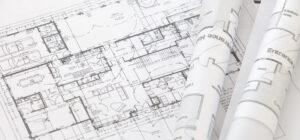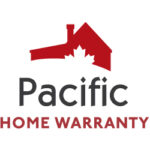What is a Net Zero Home?
A net zero home is a home that produces its own clean energy at the same rate it uses that energy. These homes are incredibly efficient, up to 80% better than regular homes. All the energy produced by the home is generated in renewable ways to prevent greenhouse gas emissions and remain sustainable for years. It is important to note that the net zero value is calculated over a year’s time; some months of the year the home will need to be powered by grid energy, and other months of the year the home will be producing more energy than it needs and the excess can be sold back to the grid.
What is the Best Way to get a Net Zero Home?
Net zero homes rely on a few things to ensure they can reach maximum energy efficiency, a key component of sustainability. Insulation, airtightness, energy saving features, and the design of the home all impact whether the building can reach net zero status.
- Insulation: Insulation is one of the most crucial components of a home’s structure that allows it to reach its efficiency potential. Great insulation throughout the home will reduce the energy demand all year round and make certain that all the energy being put into the home is used within the home and is not escaping through heat transfer between the house’s interior and the outside air.
- Airtightness: Air leaks around windows and doors are one of the most common and costly areas of energy loss in a home. Securing these sources of inefficiency in the house by upgrading the window quality, door material, and seal around the frames can drastically reduce the amount of energy wasted and will overall lower the energy demand of the home.
- Energy Saving Features: Many more focused features of the home can affect its energy demand and therefore impact its ability to reach net zero status. New and efficient appliances play a major role in lowering the energy used by a home day to day; these appliances are designed to be more efficient both during use and in rest modes. The appliances and lightbulbs used in the home should be Energy Star rated to avoid excessive energy waste.
- Design: The big-picture structural design of the home not only affects its aesthetic appeal; it also impacts its energy efficiency. The building’s orientation, surrounding climate, structural shape, and material are all factors that influence how energy will be used within it. It also determines what kind of energy generation can be incorporated. These decisions cannot be made for older homes, so the other factors listed become even more important. For homeowners building their house from the ground up, there are companies that specialize in net zero homes that will consider all these design components to give the home its best chance of being net zero.
While all these factors greatly influence a home’s ability to be net zero, it is also important for homeowners to be mindful of their daily energy use. As efficient as these homes can be, it is still up to the occupants to reduce the energy demand on the home to ensure it is possible to produce as much energy as is used in a year.
What are the Benefits of a Net Zero Home?
Net zero homes are great for many reasons, and some of them might be a bit surprising. However unexpected, the benefits of these homes are unparalleled by any other building standards out there.
- Passive Heat: Net zero homes often taken advantage of the sun’s heat and light to warm the house and reduce the energy needed for temperature maintenance. The orientation of the house and the window design are two of the biggest factors impacting how much of an advantage passive heat will be for the home.
- Reduced Energy Bills: The energy produced by the home for free allows a homeowner to avoid paying energy bills for a god portion of the year; it is even possible to make money from excess energy. Even when the home requires grid energy to meet demand, the energy efficiency of the house greatly reduces the total on the energy bill.
- Prevents Greenhouse Gas Emissions: Since all the energy used by the home is renewably generated by the home itself, there are no greenhouse gas emissions released as a result of energy use. Even though there are periods of the year that the home relies on support from grid energy, the excess sustainable energy produced and given to the grid at other times of the year means that the home entirely prevents the emission of greenhouse gas emissions.
- Higher Home Value: All the features that make a net zero home possible also add a lot of value to it. High quality appliances, on site energy production, and the home’s durability all increase the resale value make the home more attractive to potential buyers.
- Improved Health: Net zero homes have some of the best air quality possible due to built in air filtration systems. Since the majority of dust and allergens present in the outside air are not allowed into your home, your health will benefit greatly.
- Noise Cancellation: Since net zero homes are built tightly with minimal air leakage and a lot of insulation, outside noise essentially has no way into the home. As a result, a net zero home is very quiet; no lawnmowers, loud neighbors, or nearby traffic will be heard inside the house.
How Much Does a Net Zero Home Cost?
Net zero homes are obviously more expensive to build than regular houses. Despite the costly initial expense, a net zero home will save an exorbitant amount of money in the long run. The average cost of building a net zero home is roughly 15-20% more than normal homes. Although this cost difference may deter many people from purchasing a net zero home, the benefits are worth the expense for those that can afford it. The hope is that net zero homes will continue to be made more affordable as they become more common and the technology improves.





